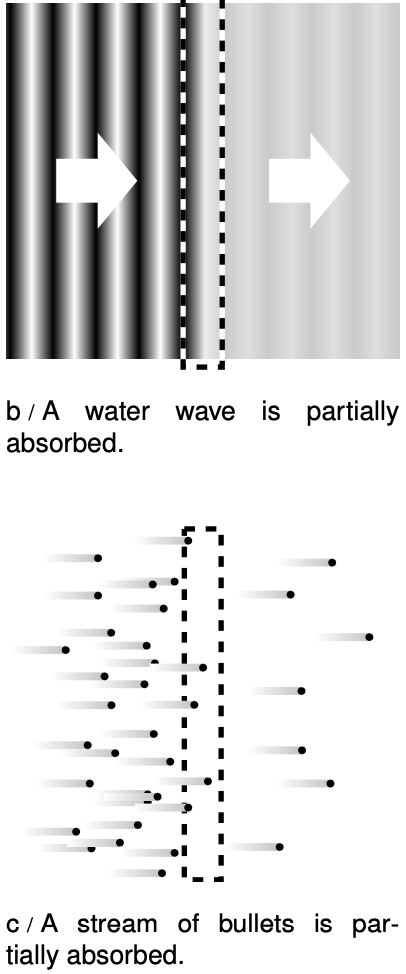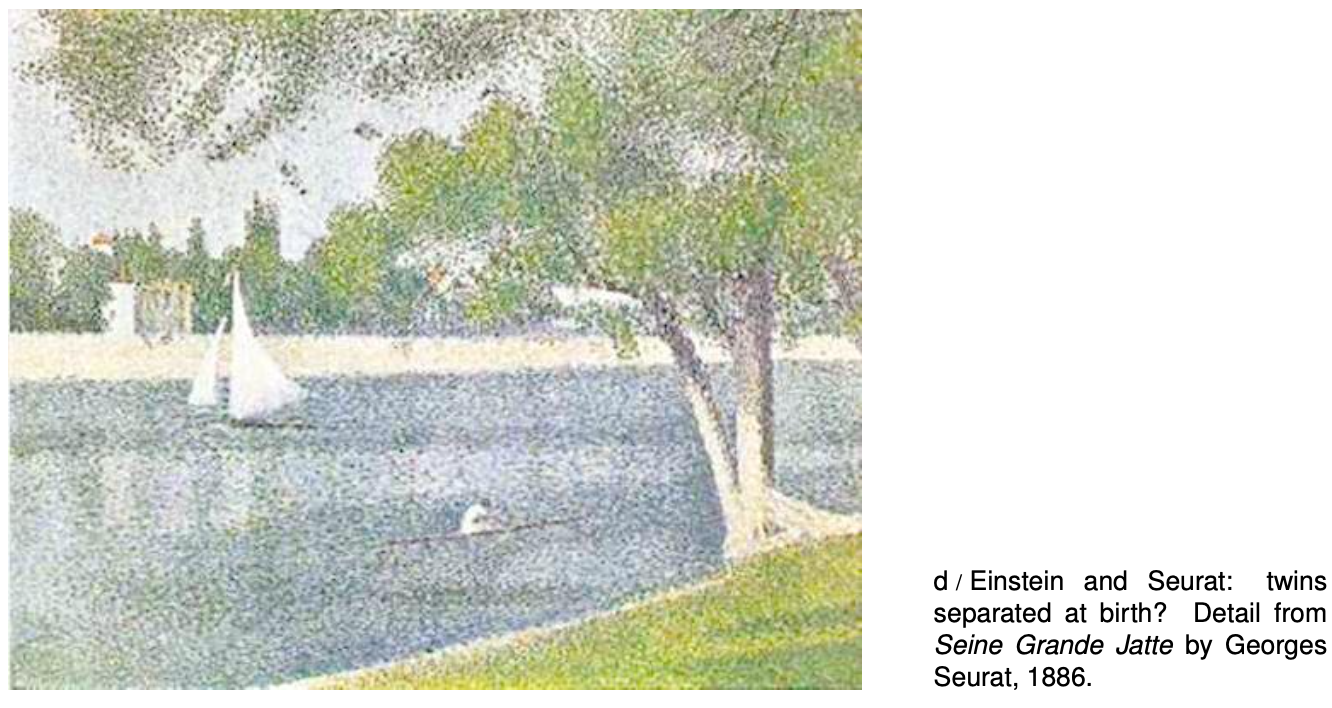LM 34.1 Evidence for light as a particle Collection
34.1 Evidence for light as a particle by Benjamin Crowell, Light and Matter licensed under the Creative Commons Attribution-ShareAlike license.
34.1 Evidence for light as a particle

For a long time, physicists tried to explain away the problems with the classical theory of light as arising from an imperfect understanding of atoms and the interaction of light with individual atoms and molecules. The ozone paradox, for example, could have been attributed to the incorrect assumption that the ozone layer was a smooth, continuous substance, when in reality it was made of individual ozone molecules. It wasn't until 1905 that Albert Einstein threw down the gauntlet, proposing that the problem had nothing to do with the details of light's interaction with atoms and everything to do with the fundamental nature of light itself.
 In those days the data were sketchy, the ideas vague, and the experiments difficult to interpret; it took a genius like Einstein to cut through the thicket of confusion and find a simple solution. Today, however, we can get right to the heart of the matter with a piece of ordinary consumer electronics, the digital camera. Instead of film, a digital camera has a computer chip with its surface divided up into a grid of light-sensitive squares, called “pixels.” Compared to a grain of the silver compound used to make regular photographic film, a digital camera pixel is activated by an amount of light energy orders of magnitude smaller. We can learn something new about light by using a digital camera to detect smaller and smaller amounts of light, as shown in figures a/1 through a/3. Figure 1 is fake, but 2 and 3 are real digital-camera images made by Prof. Lyman Page of Princeton University as a classroom demonstration. Figure 1 is what we would see if we used the digital camera to take a picture of a fairly dim source of light. In figures 2 and 3, the intensity of the light was drastically reduced by inserting semitransparent absorbers like the tinted plastic used in sunglasses. Going from 1 to 2 to 3, more and more light energy is being thrown away by the absorbers.
In those days the data were sketchy, the ideas vague, and the experiments difficult to interpret; it took a genius like Einstein to cut through the thicket of confusion and find a simple solution. Today, however, we can get right to the heart of the matter with a piece of ordinary consumer electronics, the digital camera. Instead of film, a digital camera has a computer chip with its surface divided up into a grid of light-sensitive squares, called “pixels.” Compared to a grain of the silver compound used to make regular photographic film, a digital camera pixel is activated by an amount of light energy orders of magnitude smaller. We can learn something new about light by using a digital camera to detect smaller and smaller amounts of light, as shown in figures a/1 through a/3. Figure 1 is fake, but 2 and 3 are real digital-camera images made by Prof. Lyman Page of Princeton University as a classroom demonstration. Figure 1 is what we would see if we used the digital camera to take a picture of a fairly dim source of light. In figures 2 and 3, the intensity of the light was drastically reduced by inserting semitransparent absorbers like the tinted plastic used in sunglasses. Going from 1 to 2 to 3, more and more light energy is being thrown away by the absorbers.
The results are dramatically different from what we would expect based on the wave theory of light. If light was a wave and nothing but a wave, b, then the absorbers would simply cut down the wave's amplitude across the whole wavefront. The digital camera's entire chip would be illuminated uniformly, and weakening the wave with an absorber would just mean that every pixel would take a long time to soak up enough energy to register a signal.
But figures a/2 and a/3 show that some pixels take strong hits while others pick up no energy at all. Instead of the wave picture, the image that is naturally evoked by the data is something more like a hail of bullets from a machine gun, c. Each “bullet” of light apparently carries only a tiny amount of energy, which is why detecting them individually requires a sensitive digital camera rather than an eye or a piece of film.
Although Einstein was interpreting different observations, this is the conclusion he reached in his 1905 paper: that the pure wave theory of light is an oversimplification, and that the energy of a beam of light comes in finite chunks rather than being spread smoothly throughout a region of space.

We now think of these chunks as particles of light, and call them “photons,” although Einstein avoided the word “particle,” and the word “photon” was invented later. Regardless of words, the trouble was that waves and particles seemed like inconsistent categories. The reaction to Einstein's paper could be kindly described as vigorously skeptical. Even twenty years later, Einstein wrote, “There are therefore now two theories of light, both indispensable, and − as one must admit today despite twenty years of tremendous effort on the part of theoretical physicists − without any logical connection.” In the remainder of this chapter we will learn how the seeming paradox was eventually resolved.
Discussion Questions
A Suppose someone rebuts the digital camera data in figure a, claiming that the random pattern of dots occurs not because of anything fundamental about the nature of light but simply because the camera's pixels are not all exactly the same − some are just more sensitive than others. How could we test this interpretation?
B Discuss how the correspondence principle applies to the observations and concepts discussed in this section.
34.1 Evidence for light as a particle by Benjamin Crowell, Light and Matter licensed under the Creative Commons Attribution-ShareAlike license.
Calculators and Collections
- Comments
- Attachments
- Stats
No comments |
